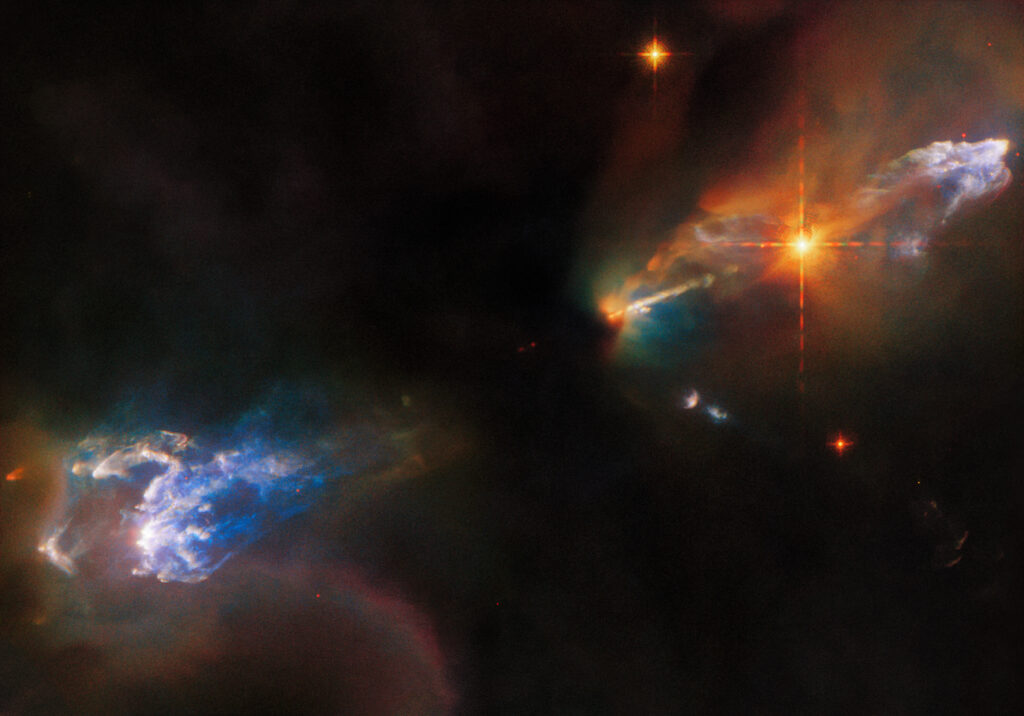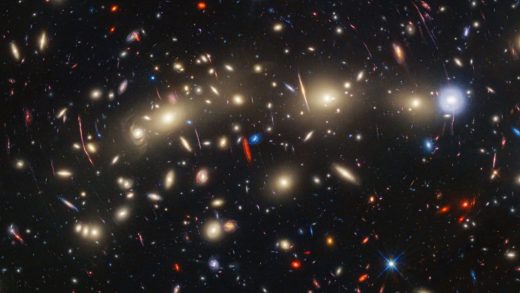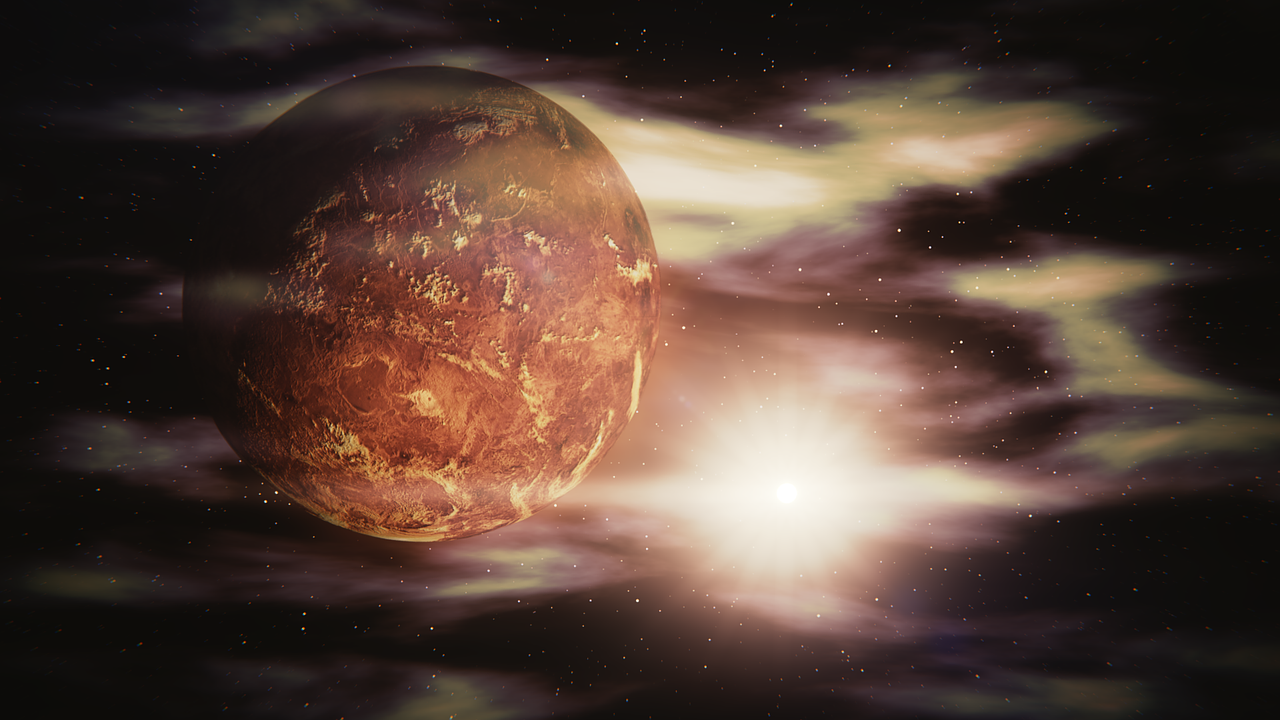Hubble Views a Turbulent Stellar Nursery
As shown in the images of the Herbig-Haro objects HH 1 and HH 2 below from the NASA/ESA Hubble Space Telescope, the lives of newborn stars are turbulent. Both objects are around 1,250 light-years away from Earth and are in the constellation Orion. The luminous cloud in the top right of this image, which is above the bright star, is called HH 1, and the cloud on the lower left is named HH 2.

While both Herbig-Haro objects are visible, the young star system that gave rise to them is hidden from view, trapped in the dense dust clouds at the image’s center. However, a bright jet can be seen emerging from the center of the dark cloud, which indicates an outflow of gas from one of these stars. It was previously believed that the source of these jets was the bright star located between that jet and the HH 1 cloud, but it turned out to be an unrelated double star that formed nearby.
Glowing groups known as Herbig-Haro objects can be found near some young stars. They are created when gas jets ejected from these newborn stars crash into the gas and dust in their surroundings at extremely high speeds. Hubble observations in 2002 showed that some of HH 1 was travelling faster than 248 miles per second (400 kilometers per second)!
This tumultuous stellar nursery was captured by Hubble’s Wide Field Camera 3 using 11 different filters at infrared, visible, and ultraviolet wavelengths. These filters, which are each only partly sensitive to the electromagnetic spectrum, allow astronomers to identify interesting processes that produce light at particular wavelengths.
For HH 1 and 2, two groups of astronomers asked Hubble to conduct observations for two distinct studies. Astronomers gained a greater understanding of the physical processes taking place when outflows from young stars meet with surrounding gas and dust from the first study, which focused on the structure and motion of the Herbig-Haro objects visible in this image.
The second study was based on the outflows themselves to build the framework for upcoming observations with the NASA/ESA/CSA JWST, which will revolutionize research on young star outflows thanks to its capability to see through dust clouds surrounding young stars.
Note: Title and Text may be edited for style only.


